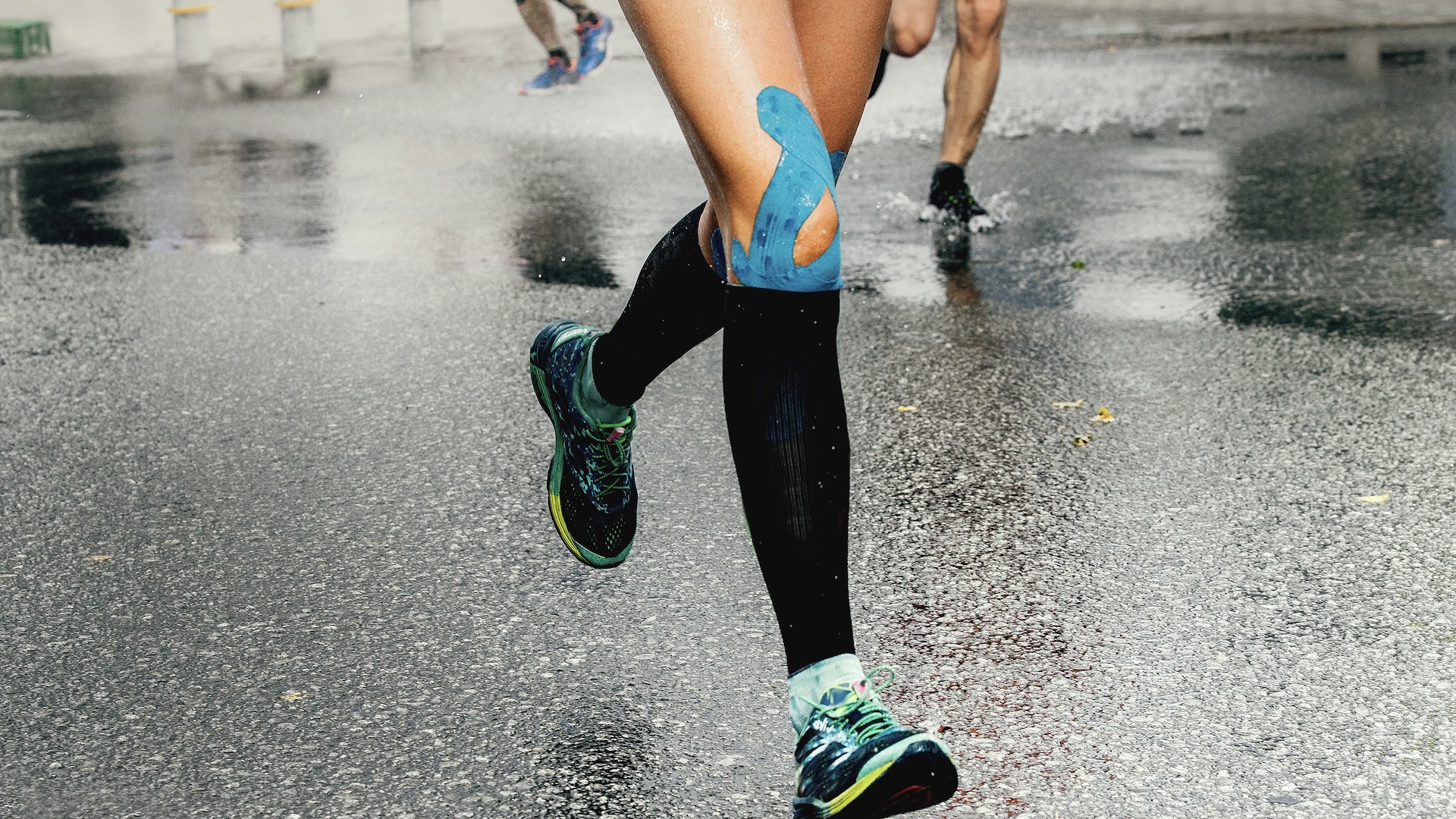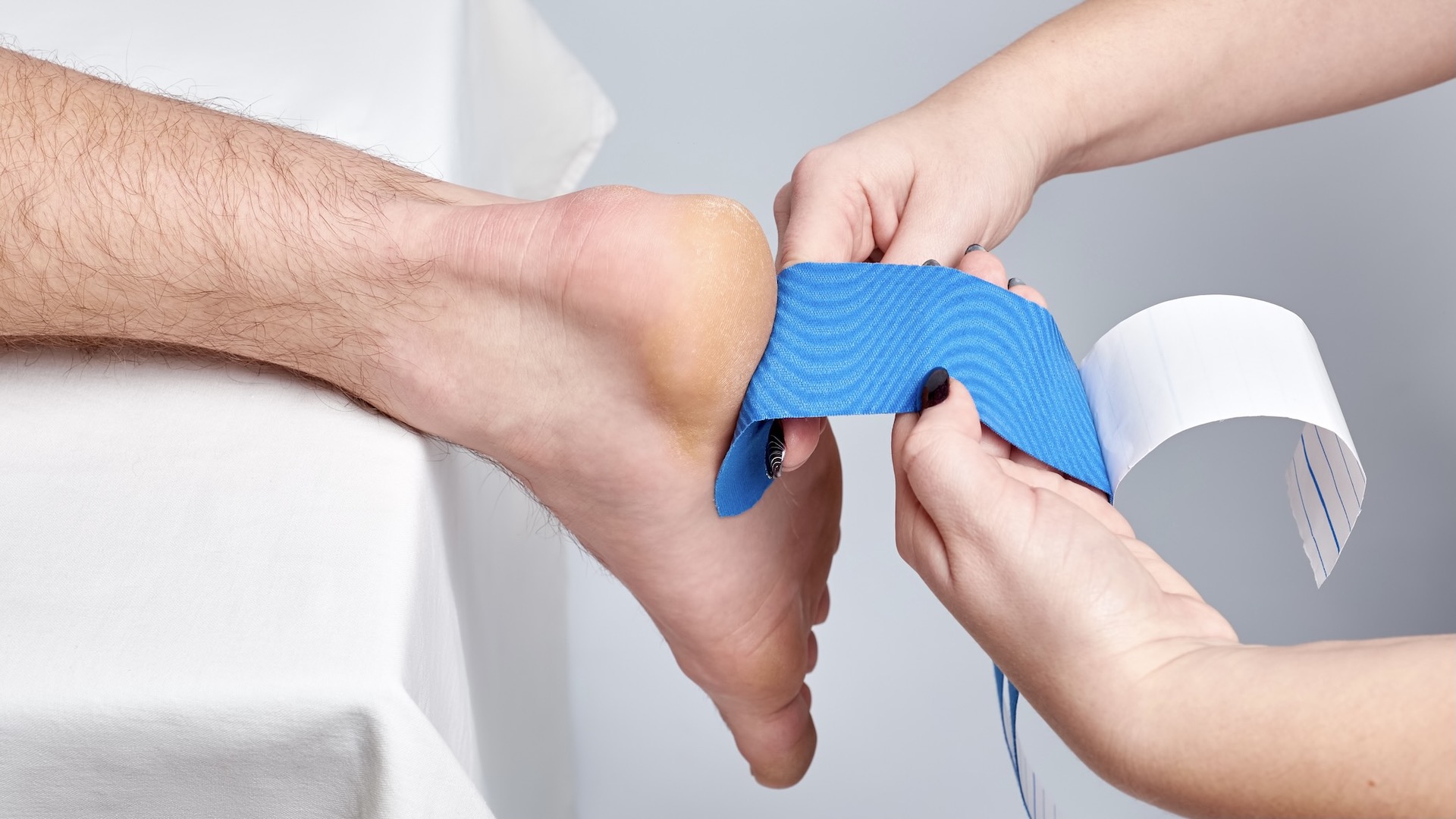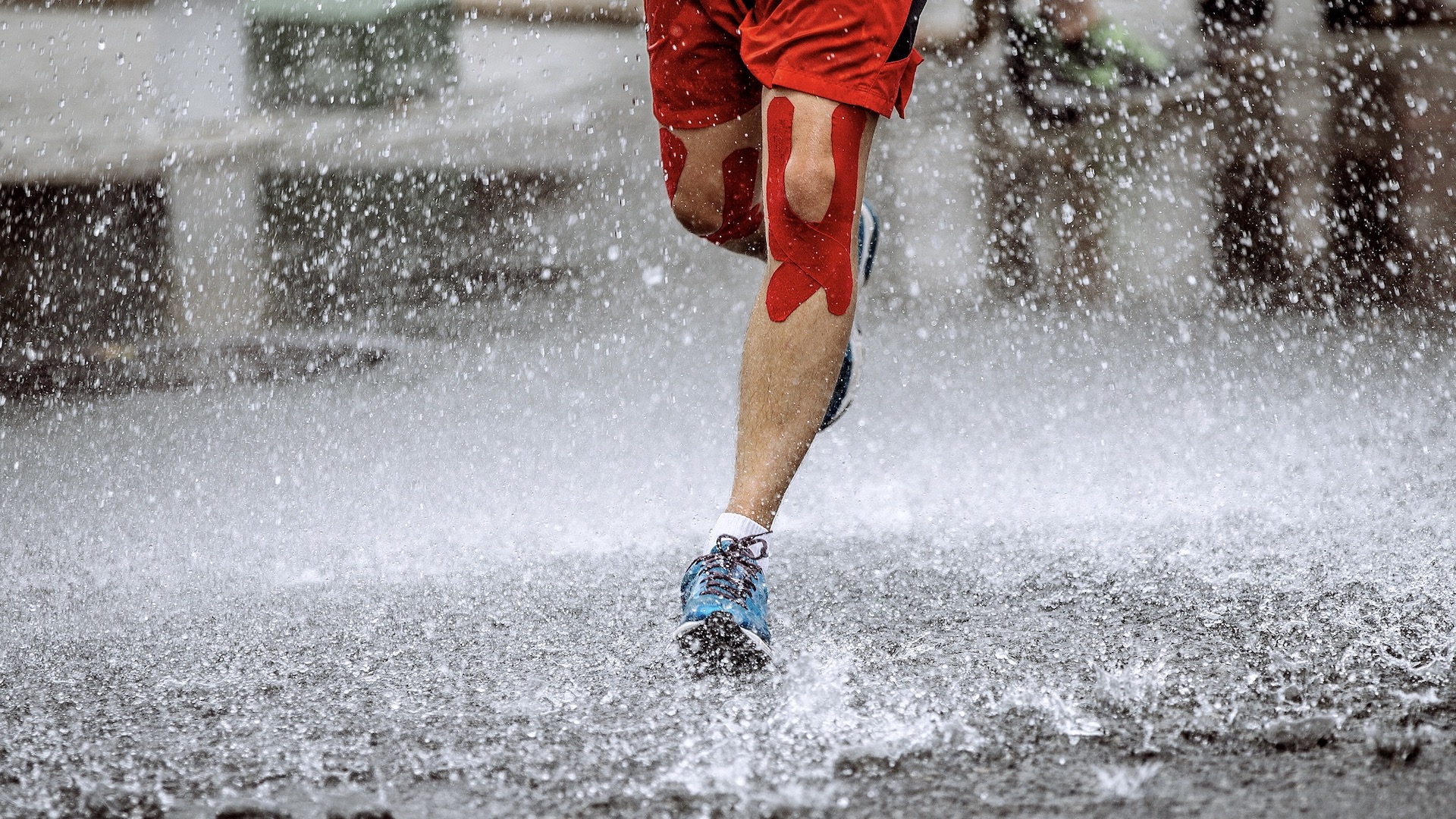Kinesiology taping: what is it and how can it help runners?
We take a look at the ideas and theories behind the use of kinesiology taping

You will have seen many sports people, both professional and amateur, wearing brightly colored tape, yet do you know why and what it does? The sports tape is called kinesiology tape and it is described as a therapeutic tape that’s applied strategically to the body to help with injuries.
The tape is often used to provide support, reduce pain and swelling, and, it’s claimed, to improve performance.
The origins of kinesiology tape dates to the late 1970s when a Japanese chiropractor, Dr Kenzo Kase, developed a tape, known as Kinesio tape or Kinesio Tex Tape. He wanted a method for supporting an athlete’s body but without limiting movement.
These days, the tape is available to buy from multiple brands and in a wide variety of colors.

How does kinesiology tape work?
Pick up a section of kinesiology tape and you’ll discover it is very stretchy. In addition, one side is sticky, while the other side is fabric.
The tape is designed to mimic the skin’s elasticity, which means you maintain full range of movement, even if you are taking part in sports.
The tape is also water-resistant, so it will stay put for three to five days. This means you can run and take showers without the tape coming off.
Advnture Newsletter
All the latest inspiration, tips and guides to help you plan your next Advnture!
When the tape is applied to the body, it recoils a little, with the aim of gently lifting the skin. It’s claimed that it’s this lifting, which creates a slight space between your skin and the tissues underneath or in the joint, that helps to reduce pain and aid the recovery of injuries.
The science – or not – behind kinesiology tape
There is a great deal of debate about the efficacy of kinesiology tape. The most persuasive evidence is anecdotal. Many athletes, including runners, believe the tape works to reduce the pain of injuries, as well as improving the speed of recovery.
It's difficult to prove whether the anecdotal evidence is true, or not, and it could be there is a simple psychological explanation, in that, we believe it works, so it does.
Over recent years, there have also been some small scientific studies that appear to indicate that the sports tape works in different ways to benefit athletes.
For example, research published by the US National Library of Medicine showed that the tape can create a small space in injured joints and that is enough to reduce joint irritation and improve the healing process of an injury.
In a similar way, it's thought that kinesiology tape may help to improve circulation of blood and fluids. If you have suffered a trail running injury, it could be that the application of kinesiology tape will “modestly” improve blood flow in the skin.
The theory is that the use of kinesiology tape helps to create extra subcutaneous space and leads to an improved flow of lymphatic fluid.
It’s also claimed that the tape changes the information that the brain sends to the sensory nervous system about pain. To explain, all the body’s tissue, whether skin, connective tissue, fascia or muscles, has sensory receptors that can feel touch, pain and temperature. It’s these receptors that contribute to proprioception.
It’s therefore suggested that the the lift created by the kinesiology tape help to “unload” the tissues. In so doing, this changes the messages that the brain sends to these parts of the body.
As an example, sports therapists often use kinesiology tape on trigger points. These are areas of the body where muscles have become tense and knotted. If the tape is applied in these areas, it’s thought the pain signal to the brain is changed and so the tension in the tigger point area reduces.
In fact, a study in 2016 suggested that trigger point pain was reduced and flexibility was increased for people when kinesiology tape and manual pressure were used together.

Other uses for kinesiology tape
Other uses of kinesiology tape include extra support for weak muscles or joints. For example, many runners believe in the benefits of kinesiology tape for IT Band Syndrome, as well as Achilles tendonitis.
It is also claimed that it’s possible to use the tape to re-educate or re-train muscles. Some injuries, for example weak glutes, can be due to under-use and by taping the area it can serve as a ‘reminder” to the muscles to activate.
The theory for this is that by wearing the tape, the body “senses” it and makes your muscles more aware of how you are moving.
Some athletes, including runners, also believe that simply wearing the tape can help them to perform better. For example, you’ll see runners with tape on their heels, calves, thighs and glute areas and it’s thought that when taking part in an endurance event it may help to remind the muscles to continue to perform.

How to apply kinesiology tape
The best approach for the correct use of kinesiology tape is to book an appointment with an approved practitioner. There are plenty of sports therapists that are trained to ensure proper application of kinesiology. Most will also show you how to repeat the application.
In addition, you’ll discover plenty of kinesiology tape application tutorials on-line, especially on YouTube. Be cautious with these if it’s your first time of applying the tape, although many people have gained good results this way.
It’s worth noting, through, that kinesiology taping is not a remedy for poor training habits or repeated bad running practice. It's also not a permanent solution for an injury. The best way to recover from injury, or to prevent an injury occurring in the first place, is to make sure you focus on good running technique, gait and additional strength and conditioning.

Fiona Russell is a widely published adventure journalist and blogger, better known as Fiona Outdoors. She is based in Scotland and is an all-round outdoors enthusiast with favorite activities including trail running, mountain walking, mountain biking, road cycling, triathlon and skiing (both downhill and backcountry). Aside from her own adventures, Fiona's biggest aim is to inspire others to enjoy getting outside and exploring, especially through her writing. She is also rarely seen without a running skort! Find out more at Fiona Outdoors.
